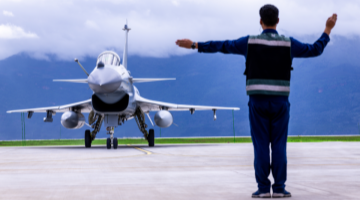By Yang Zhen
The multinational joint exercise Rim of the Pacific (RIMPAC) 2024 hosted by the US Pacific Fleet, allegedly the largest joint exercise in the world, will last from June 27 to August 1 around the Hawaiian Islands and at Pearl Harbor. According to information on the website of the US Naval Institute, 29 countries, 40 surface vessels and 3 submarines 14 national land forces, over 150 aircraft, and 25,000 personnel participated in the exercise.
The US, the largest maritime hegemony in human history, has always made obtaining and maintaining maritime dominance as its strategic goal. However, the Red Sea crisis told the world that its navy wasn't as superior as imagined. As the navy is an irreplaceable strategic force in the "major country competition" pursued and hyped by the US, the RIMPAC exercise this year holds special significance.
First of all, this year's RIMPAC is clearly targeted at China. "To give China a warning, the US and its allies need to carry out multiple sinking exercises in the region to demonstrate Washington's capability to sink large numbers of Chinese ships in the early stage of a conflict," said an expert from an American think tank, who asked for anonymity. News from the US Navy showed that one of the highlights of RIMPAC 2024 is the live-fire sinking of the retired Amphibious Assault Ship USS Tarawa with a displacement of 40,000 tons, which the US military said was aimed to demonstrate the joint forces' ability to easily destroy the PLA's landing troops and disrupt the Chinese mainland's reunification operations by force. Considering foreign media reports that China's Type 075 amphibious assault ship has a displacement of over 40,000 tons, relevant countries didn't bother to conceal the fact that RIMPAC 2024 is highly targeted at China, which has surprised many.
Second, the exercise comprises a full range of subjects. A major function of the military exercise is to verify military theories and examine how well the troops and their equipment perform together. The latest exercise comprised all the combat forms of the navy, such as anti-ship, air defense, sea-to-shore assault, amphibious landing, anti-submarine, and anti-mine subjects, plus special operations and humanitarian assistance – rarely comprehensive.
At last, the exercise conveys strong geopolitical intentions. As a hegemonic power in the international system, the US, a North American country, has been consistently trying to dominate the affairs on the Eurasian continent. The Trump administration determined the approach to achieving this strategic goal – by instigating major-country competition. This idea was picked up and developed by the Biden administration, which resulted in the Ukraine crisis. Yet two years through the crisis, Washington, to its surprise, found that the situation hadn't proceeded as it had expected. Ukraine has become increasingly passive in the war with Russia despite the huge amounts of assistance from NATO, and it is exhausting NATO's resources at an appalling speed.
Seeing this, the US has to make emergency adjustments in its geopolitical deployments, which explains why the RIMPAC 2024 conveys such strong geopolitical intentions, as proven by such exercise subjects as air strikes, anti-submarine warfare, special operations, amphibious assault, and massive confrontations on the sea. The strategic importance of the Navy is showcased to the full during this joint exercise, giving a glimpse into the strength of the 100-year-old US Navy.
The RIMPAC 2024 exercise is still going on. The Pacific Ocean, the largest in the world, may very well lose its peace because of it and similar exercises in the future, posing a dilemma to all people living in countries around the ocean.
(The author is deputy director of the Northeast Asia Research Center, Shanghai University of Political Science and Law.)
Editor's note: Originally published on china.com.cn, this article is translated from Chinese into English and edited by the China Military Online. The information and opinions in this article do not necessarily reflect the views of eng.chinamil.com.cn.













